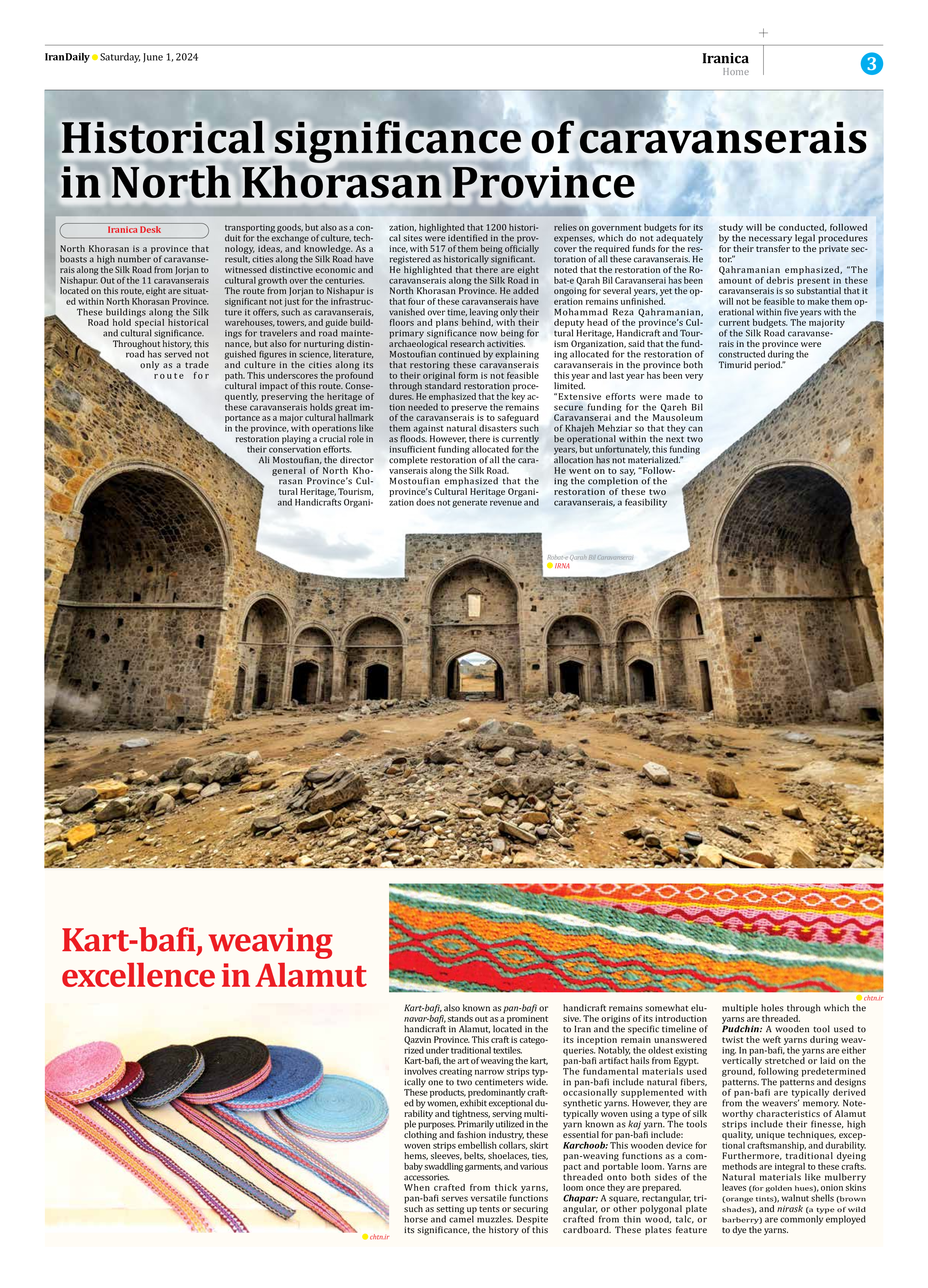
Historical significance of caravanserais in North Khorasan Province
North Khorasan is a province that boasts a high number of caravanserais along the Silk Road from Jorjan to Nishapur. Out of the 11 caravanserais located on this route, eight are situated within North Khorasan Province. These buildings along the Silk Road hold special historical and cultural significance.
Throughout history, this road has served not only as a trade route for transporting goods, but also as a conduit for the exchange of culture, technology, ideas, and knowledge. As a result, cities along the Silk Road have witnessed distinctive economic and cultural growth over the centuries.
The route from Jorjan to Nishapur is significant not just for the infrastructure it offers, such as caravanserais, warehouses, towers, and guide buildings for travelers and road maintenance, but also for nurturing distinguished figures in science, literature, and culture in the cities along its path. This underscores the profound cultural impact of this route. Consequently, preserving the heritage of these caravanserais holds great importance as a major cultural hallmark in the province, with operations like restoration playing a crucial role in their conservation efforts.
Ali Mostoufian, the director general of North Khorasan Province’s Cultural Heritage, Tourism, and Handicrafts Organization, highlighted that 1200 historical sites were identified in the province, with 517 of them being officially registered as historically significant.
He highlighted that there are eight caravanserais along the Silk Road in North Khorasan Province. He added that four of these caravanserais have vanished over time, leaving only their floors and plans behind, with their primary significance now being for archaeological research activities.
Mostoufian continued by explaining that restoring these caravanserais to their original form is not feasible through standard restoration procedures. He emphasized that the key action needed to preserve the remains of the caravanserais is to safeguard them against natural disasters such as floods. However, there is currently insufficient funding allocated for the complete restoration of all the caravanserais along the Silk Road.
Mostoufian emphasized that the province’s Cultural Heritage Organization does not generate revenue and relies on government budgets for its expenses, which do not adequately cover the required funds for the restoration of all these caravanserais. He noted that the restoration of the Robat-e Qarah Bil Caravanserai has been ongoing for several years, yet the operation remains unfinished.
Mohammad Reza Qahramanian, deputy head of the province’s Cultural Heritage, Handicraft and Tourism Organization, said that the funding allocated for the restoration of caravanserais in the province both this year and last year has been very limited.
“Extensive efforts were made to secure funding for the Qareh Bil Caravanserai and the Mausoleum of Khajeh Mehziar so that they can be operational within the next two years, but unfortunately, this funding allocation has not materialized.”
He went on to say, “Following the completion of the restoration of these two caravanserais, a feasibility study will be conducted, followed by the necessary legal procedures for their transfer to the private sector.”
Qahramanian emphasized, “The amount of debris present in these caravanserais is so substantial that it will not be feasible to make them operational within five years with the current budgets. The majority of the Silk Road caravanserais in the province were constructed during the Timurid period.”







